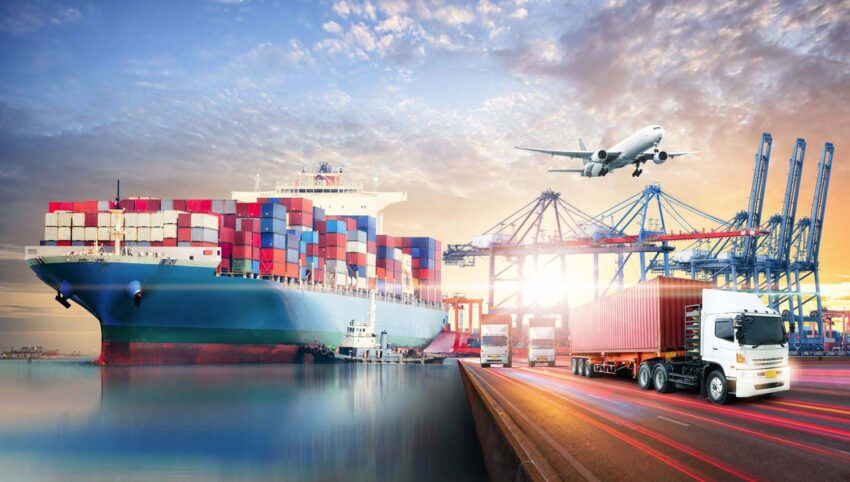
As the gap between geographies closes due to the era of digital transformation, the import-export trade business has become an essential part of the global economy. With businesses relying on cross-border commerce and trading businesses to generate revenue, it has become even more essential to streamline the process of imports and exports of goods. While the pandemic taught us the urgency of bringing the latest technology to the trading table, we can definitely be optimistic about the changes to come. Today, there are several improvements compared to the regulations of the past, which gives us all hope of more lucrative opportunities, thanks to technology making legal trade easier for all parties involved.
In today’s blog, let us take a look at the different ways that cutting-edge technology can be integrated into import-export trade businesses for the benefit of all. Without any stalling, let’s get right into it.
Areas of Technological Improvement in Import Exports
- Streamlined Communication: Communication is key in any business, but it is especially important in the import-export trades since the supply chain involves a long line of parties involved. With goods moving across borders around the clock and across time zones, it’s essential to have real-time communication with suppliers, buyers, and customs officials. With the help of the latest communication technology, businesses can use messaging platforms, such as Skype or WhatsApp, to communicate with partners across the globe. This not only speeds up the communication process but also provides a record of all conversations.
- Digital Documentation: Another critical element of trading is performing due diligence in the process of documentation. The paperwork involved in international trade can be overwhelming, with documents such as bills of lading, customs declarations, and invoices needing to be filled out and signed. This is where technology can make a significant difference. With the use of digital documentation, businesses can streamline the process of generating, signing, and sharing important documents. This not only saves precious time and money but also reduces the risk of errors and delays.
- Automated Compliance: Compliance is a non-negotiable aspect of imports and exports, with every country having its own set of regulations. Since there may be contrasting rules and statements involved, the use of technology is especially important to ensure that all these regulations are met without ambiguity. Compliance can be a time-consuming process, but with technology, businesses can automate compliance checks. Today, the easiest way to have the latest customs brokerage explained to your staff is by integrating the latest compliance software that also provides updated information on such charges. This means that the system will check all documents to ensure that they meet the requirements of the country they are being shipped to. This reduces the risk of errors and delays caused by non-compliance.
- Data Analysis: With 2.5 quintillion terabytes of data generated every day, you can only imagine the amount of information packed during the importing and exporting process. No wonder it can quickly become overwhelming to manage with old-school methods. With technology, businesses can use data analysis tools to make sense of all the data. This not only provides valuable insights into the business but also helps to identify trends and areas for improvement.
Role of Technology in Import Export Trades
- AI-powered Supply Chains: Artificial Intelligence (AI) can be used to optimize the supply chain process, making it more efficient and reducing the risk of errors. AI-powered supply chains can automatically adjust production schedules, optimize inventory levels, and even predict demand based on historical data. This technology can also be used to identify bottlenecks and optimize shipping routes, reducing the time and cost of transporting goods.
- IoT: The Internet of Things (IoT) is a network of physical objects that are connected to the Internet, allowing them to collect and share data. It can be applied to improve the logistics process by tracking goods in real-time as well as providing businesses with valuable information about the location, condition, and temperature of their shipments. This technology can also be utilized to monitor the performance of their equipment, identify potential maintenance issues, and optimize energy consumption.
- Blockchain Technology: Blockchain technology refers to a distributed ledger system that can be implemented to generate secure, transparent, and tamper-proof records of transactions. In the trade business, blockchain can be deployed to create a transparent and secure record of every transaction, including customs formalities. This can aid in reducing the risk of fraud and increase trust between businesses and customs officials.
Conclusion
As we can see, the world has also come to an astounding pace by integrating the latest technological reforms in the trade business. Today, imports and export companies, as well as customs agencies and concerned authorities, can enjoy greater scales of economies, transparent activities, and complete compliance.
Tech World Times (TWT), a global collective focusing on the latest tech news and trends in blockchain, Fintech, Development & Testing, AI and Startups. If you are looking for the guest post then contact at techworldtimes@gmail.com

